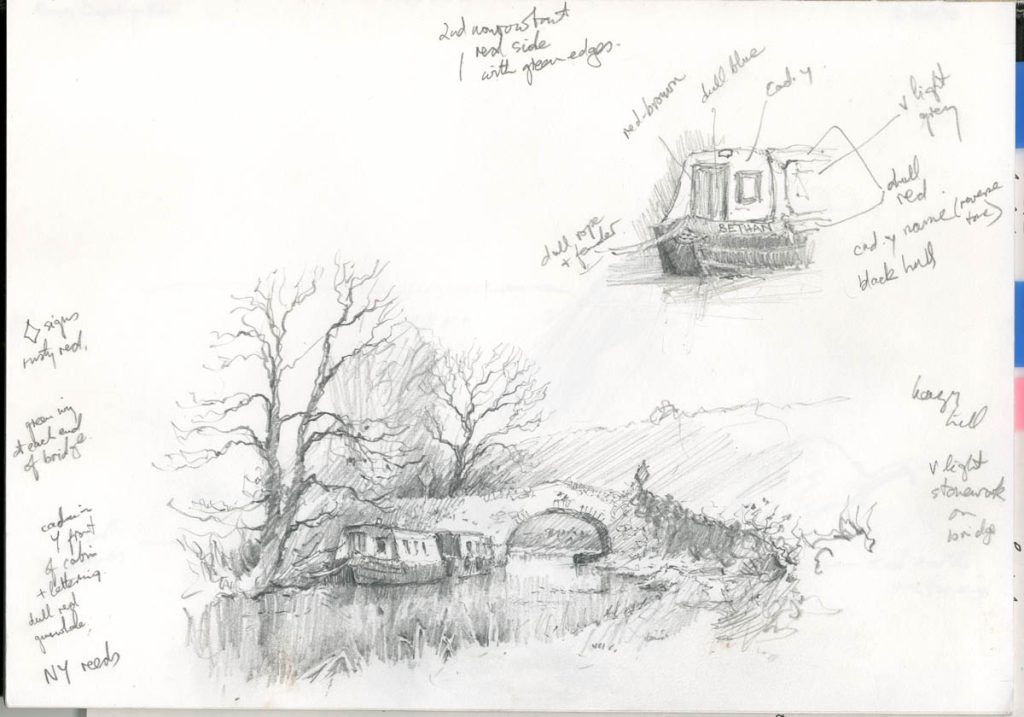Welcome to my first blog of 2025 and I wish you all a rather belated Happy New Year. May you have much success with your paintings!
As you may know, I am very keen on sketching, both for the sheer enjoyment of sketching a scene amidst nature, and for recording a composition to work up as a painting back in the studio. On expeditions, holidays and trips they are also marvellous ways of retaining memories of activities, people and places.

This time I’d like to highlight the benefits of tonal sketching in pencil, that is, where you include a lot of tonal areas rather than simply rely on a linear approach. This canal scene illustrates how the dark areas bring out the shape and character of the bridge, the trees and boats, while the medium tones both link the light and dark features and suggest detail and minor shapes. These medium tones become very important in an atmospheric sketch where you may be depicting mist, cloud, sunshine and other less strident features. I used a 4B pencil on a page of A4 size cartridge paper.
As you can see, in this case I have liberally noted down colours and at the top right drawn a larger version of the prow of the narrow-boat so that certain small details become clearer. This is useful if I will be working up a large painting later. Apart from the fact that you are recording the scene in detail and gaining an understanding of it, some details of which might become lost in a photograph of the place, you are laying out a ready-made composition and will probably not need to do a studio sketch from the photograph to ensure that everything is as you wish for in the finished painting.
You may have already seen the new merged Leisure Painter and The Artist magazine, which is packed with great information and illustrations. With so many publications now turning to digital versions I feel it’s so good to support the paper versions – I’m not so happy messing about on small screens! I have an article in the current issue on sketching during my trip to Transylvania last summer. Don’t forget to keep warm when you are out sketching!



